St Cuthbert's Home for Girls, Darlington, Durham
The St Cuthbert's Home for Girls was opened by the Bishop of Durham on November 1st, 1893. The Home, at 15 Pierremont Crescent, Darlington, was run by the Waifs and Strays Society and replaced the independent Home for Friendless Girls in Durham. St Cuthbert's provided accommodation for 40 orphan and destitute girls aged from 8-16. The building had a spacious garden at the rear, with a playground, and had a schoolroom attached, with its own entrance, and with three rooms above for use as a sanatorium.
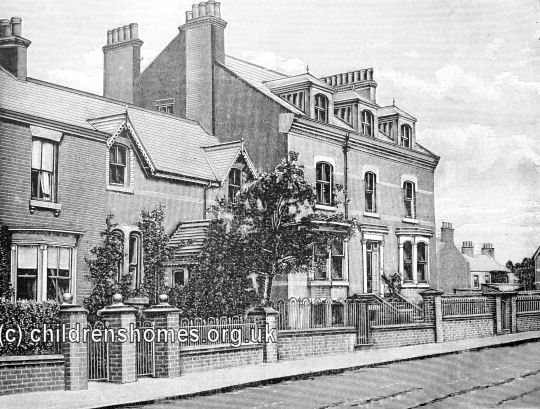
St Cuthbert's Home for Girls, Pierremont Crescent, Darlington, 1893. © Peter Higginbotham
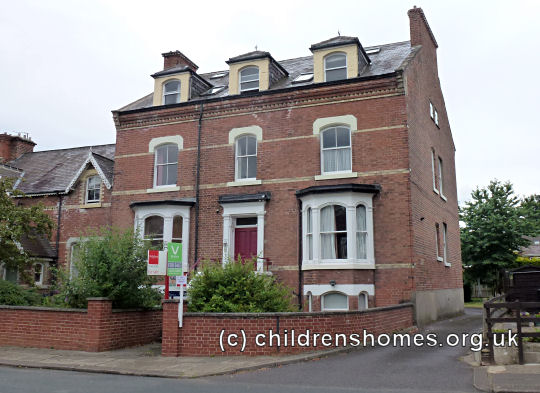
Former St Cuthbert's Home for Girls, Pierremont Crescent, Darlington, 2013. © Peter Higginbotham
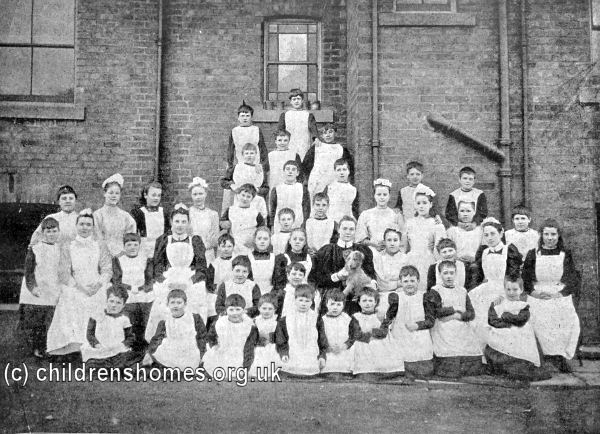
St Cuthbert's Home for Girls, Pierremont Crescent, Darlington, c.1896. © Peter Higginbotham
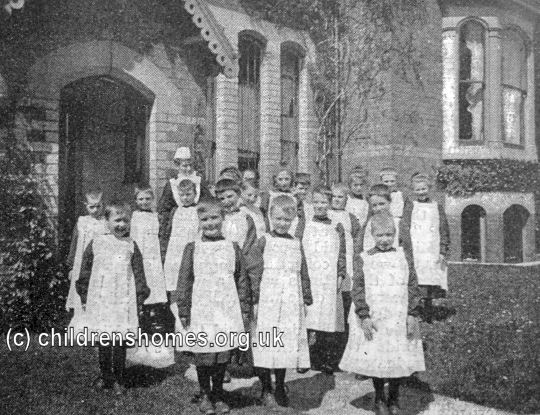
St Cuthbert's Home for Girls, Pierremont Crescent, Darlington, c.1905. © Peter Higginbotham
There were four resident matrons at the home. The older girls were given training in domestic skills such cooking, housework and laundry work. As well as dealing with its own laundry, the home took in washing from people in the local area on a commercial basis, which generated up to twenty per cent of the home's income. The younger children attended the local National School.
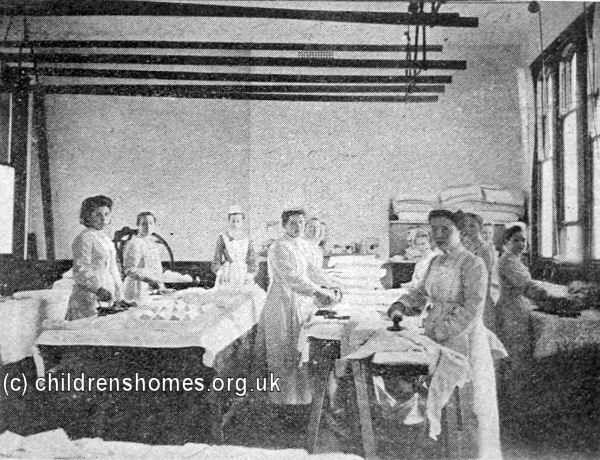
Ironing Day at St Cuthbert's Home for Girls, Pierremont Crescent, Darlington, c.1905. © Peter Higginbotham
In 1909, funds began to be raised for the construction of a new house to replace the Pierremont Crescent property. The intervention of the First World War delayed progress on the project. However, the completed building, at 89 Cleveland Avenue, Darlington, was officially opened on December 11th, 1922 by the Bishop of Durham, Dr Hensley Henson.
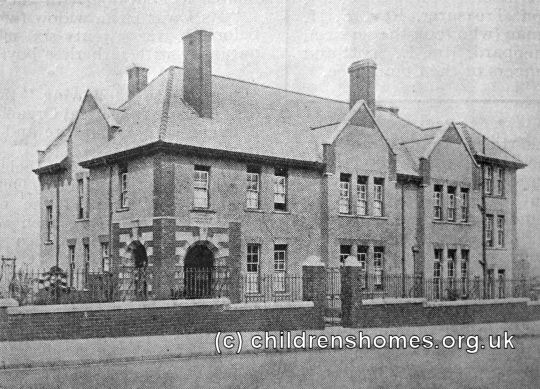
St Cuthbert's Home for Girls, Cleveland Avenue, Darlington, c.1923. © Peter Higginbotham

Swings at St Cuthbert's Home for Girls, Darlington, c.1924. © Peter Higginbotham
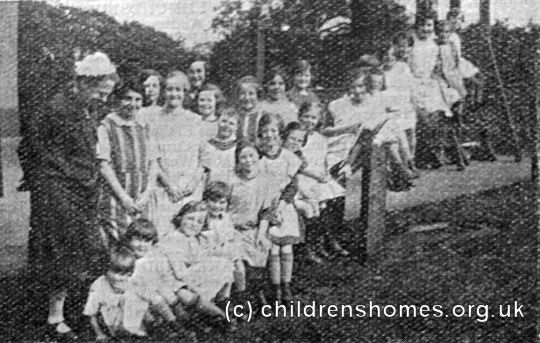
On the see-saw at St Cuthbert's Home for Girls, Darlington, c.1923. © Peter Higginbotham
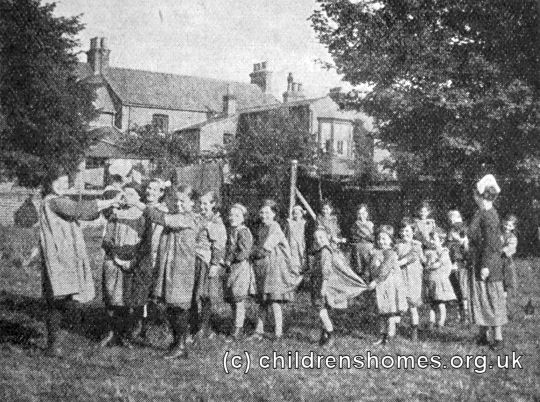
'Oranges and Lemons' at St Cuthbert's Home for Girls, Darlington, c.1923. © Peter Higginbotham
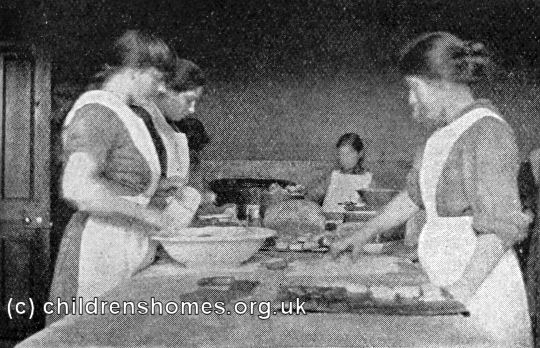
Baking at St Cuthbert's Home for Girls, Darlington, c.1923. © Peter Higginbotham
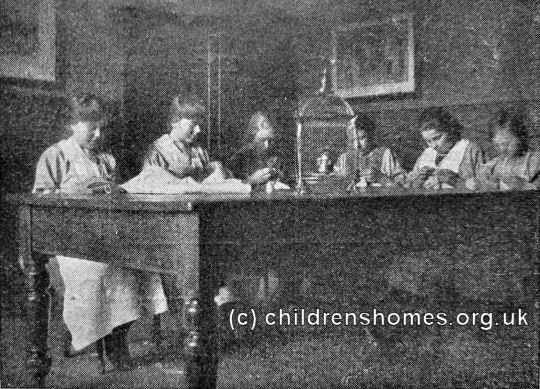
Sewing at St Cuthbert's Home for Girls, Darlington, c.1924. © Peter Higginbotham
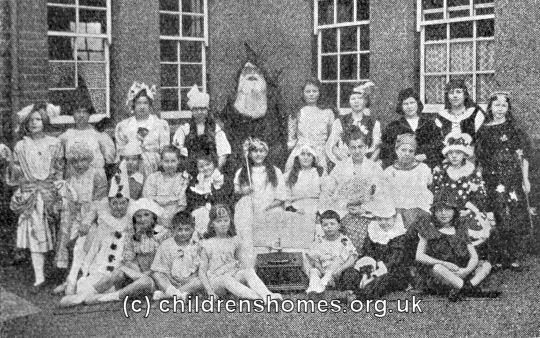
Christmas fancy dress at St Cuthbert's Home for Girls, Darlington, c.1924. © Peter Higginbotham
The home closed in 1947, re-opening two years later as St Cuthbert's Nursery which operated until 1978.
The Pierremont Crescent property is now a private residence. The Cleveland Avenue premises no longer exist.
Records
Note: many repositories impose a closure period of up to 100 years for records identifying individuals. Before travelling a long distance, always check that the records you want to consult will be available.
- Index of the Society's first 30,000 children's case files ordered by surname.
- Index of the Society's first 30,000 children's case files ordered by date of birth.
- The Children's Society Records and Archive Centre is at Unit 25, Springfield House, 5 Tyssen Street, London E8 2LZ (email: archives@childrenssociety.org.uk). Files for children admitted to its homes after September 1926 were microfilmed in the 1980s and the originals destroyed. Some post-1926 files had already been damaged or destroyed during a flood. The Society's Post-Adoption and Care Service provides access to records, information, advice, birth record counselling, tracing and intermediary service for people who were in care or adopted through the Society.
- The Society has produced detailed catalogues of its records relating to disabled children, and of records relating to the Children's Union (a fundraising body mostly supported from the contributions of children).
Bibliography
- Bowder, Bill Children First: a photo-history of England's children in need (1980, Mowbray)
- Church of England Waifs and Strays' Society [Rudolfe, Edward de Montjoie] The First Forty Years: a chronicle of the Church of England Waifs and Strays' Society 1881-1920 (1922, Church of England Waifs and Strays' Society / S.P.C.K.)
- Higginbotham, Peter Children's Homes: A History of Institutional Care for Britain's Young (2017, Pen & Sword)
- Morris, Lester The Violets Are Mine: Tales of an Unwanted Orphan (2011, Xlibris Corporation) — memoir of a boy growing up in several of the Society's homes (Princes Risborough, Ashdon, Hunstanton, Leicester) in the 1940s and 50s.
- Rudolf, Mildred de Montjoie Everybody's Children: the story of the Church of England Children's Society 1921-1948 (1950, OUP)
- Stroud, John Thirteen Penny Stamps: the story of the Church of England Children's Society (Waifs and Strays) from 1881 to the 1970s (1971, Hodder and Stoughton)
Links
- Hidden Lives Revealed — the story of the children who were in the care of The Children's Society in late Victorian and early 20th Century Britain.
- The Children's Society
Except where indicated, this page () © Peter Higginbotham. Contents may not be reproduced without permission.


